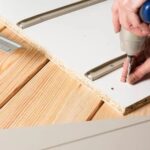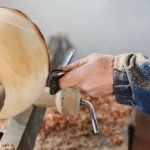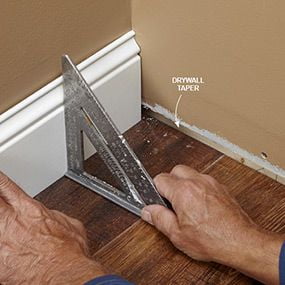Woodworking is a popular hobby and profession that involves working with various types of wood. While it can be rewarding, it also comes with potential health hazards that should not be taken lightly. Dust, chemicals, and fumes produced during woodworking can have detrimental effects on the respiratory system if proper precautions are not taken. This is where respirators play a crucial role in protecting woodworkers from these harmful particles.
In this article, we will explore the importance of using respirators specifically designed for woodworking tasks. We will dive into the potential health hazards that woodworkers may encounter, including dust, chemicals, and fumes. Understanding these hazards is essential for realizing the significance of wearing a suitable respirator to safeguard one’s health.
Choosing the right respirator is not a one-size-fits-all decision. There are several factors to consider when selecting the most appropriate one for your woodworking needs. Comfort, filtration efficiency, protection level, and suitability for different woodworking environments are some key aspects that must be taken into account.
By examining the range of 3M respirators available for woodworking applications, we will provide you with a comprehensive overview of what each model offers in terms of features and performance. Additionally, we will discuss the pros and cons of sectional respirators versus disposable ones to help you make an informed decision.
Join us as we delve into the world of 3M respirators for woodworking and explore which models are best-suited for your specific needs. Whether you are an amateur woodworker or a seasoned professional, equipping yourself with the right respiratory protection can greatly enhance both your safety and enjoyment in this craft.
The Potential Health Hazards of Woodworking
Woodworking is a popular hobby and profession that involves various processes such as cutting, sanding, and finishing wood. While it can be a fulfilling and creative activity, it also poses potential health hazards. Woodworking generates dust, chemicals, and fumes that can be harmful if inhaled. This section will discuss the potential health hazards of woodworking and the importance of using respirators to protect against them.
One of the primary health hazards in woodworking is wood dust. When wood is cut or sanded, small particles become airborne and can easily be inhaled into the lungs. Breathing in wood dust has been associated with respiratory issues such as coughing, asthma, and allergies. Additionally, certain types of wood dust may contain toxins that can lead to more severe health problems like cancer.
In addition to wood dust, woodworking often involves the use of chemicals such as paints, varnishes, and solvents. These substances emit volatile organic compounds (VOCs) that can be harmful when inhaled over long periods or in high concentrations. VOC exposure has been linked to eye irritation, nausea, headaches, and even damage to the central nervous system.
Moreover, woodworking processes like staining or burning wood can produce hazardous fumes. These fumes may contain toxins like formaldehyde or benzene that can cause respiratory irritation or more serious health effects with prolonged exposure.
To protect against these potential health hazards, it is crucial for woodworkers to wear appropriate respiratory protection such as respirators. Respirators are designed to filter out airborne particles and chemical vapors before they reach the wearer’s lungs. Using a respirator allows woodworkers to continue their craft while minimizing their risk of respiratory illnesses related to woodworking activities.
| Health Hazard | Potential Effects |
|---|---|
| Wood Dust | Respiratory issues, allergies, cancer (with certain types of wood) |
| Chemical Exposure (VOCs) | Eye irritation, nausea, headaches, central nervous system damage |
| Fumes (e.g., from staining or burning wood) | Respiratory irritation, serious health effects with prolonged exposure |
Choosing the Right Respirator
When it comes to choosing the right respirator for woodworking, there are several factors that should be taken into consideration. The following factors can help guide you in making an informed decision:
- Level of protection: The first and most important factor to consider is the level of protection provided by the respirator. Look for respirators that are specifically designed for woodworking and offer protection against both particulate matter (such as wood dust) and chemical vapors. In general, respirators with higher filtration capabilities, such as those labeled N95 or P100, provide better protection.
- Fit and comfort: A properly fitting respirator is essential for its effectiveness. Look for a respirator that has adjustable straps and a nose piece to ensure a snug fit. Comfort is also important, especially if you will be wearing the respirator for extended periods of time. Consider features such as padded nose bridges and lightweight materials to enhance comfort.
- Durability and maintenance: Woodworking can be a messy task, so it’s important to choose a respirator that is durable and easy to maintain. Look for models that are made from sturdy materials and have replaceable filters or cartridges. Also, consider how easy it is to clean the respirator after use, as proper maintenance is crucial for optimal performance.
- Reusability: Depending on your woodworking needs, you may want to choose between reusable or disposable respirators. Reusable respirators are typically more expensive upfront but can last longer with proper care and filter replacement. Disposable respirators, on the other hand, are more convenient as they require no maintenance but should be disposed of after each use.
By considering these factors before purchasing a 3M respirator for woodworking, you can ensure that you select one that provides adequate protection while also being comfortable and convenient to use. Remember to always read the product specifications and follow manufacturer guidelines for proper usage and maintenance of your chosen respirator model.
The Range of 3M Respirators for Woodworking
When it comes to choosing a respirator for woodworking, 3M offers a wide range of options to meet the needs of different woodworkers. From basic disposable respirators to high-performance sectional respirators, 3M has you covered. In this comprehensive overview, we will explore the different types of 3M respirators available and discuss their features and benefits.
One type of respirator offered by 3M is the N95 disposable respirator. These respirators are lightweight and comfortable to wear, making them ideal for extended periods of use. They provide reliable protection against airborne particles such as dust and sawdust commonly found in woodworking environments. The N95 designates that these respirators filter out at least 95% of airborne particles, ensuring high filtration efficiency.
For those who require more advanced protection against both particulates and certain gases or vapors, 3M offers sectional respirators. These respiratory systems consist of a mask or facepiece with replaceable filters or cartridges. The selection of filters or cartridges depends on the specific hazards present in your woodworking environment. Sectional respirators are available in different sizes and come with adjustable straps to ensure a secure and comfortable fit.
In addition to disposable and sectional respirators, 3M also provides powered air purifying respirator (PAPR) systems designed specifically for woodworking applications. PAPRs incorporate a battery-powered fan that draws in air through filters before delivering it to the user’s breathing zone. These systems offer a higher level of comfort as they reduce heat buildup inside the mask and provide continuous filtered airflow.
By offering a comprehensive range of respirators, 3M ensures that woodworkers can find the right level of protection for their specific needs. Whether you require basic particle filtration, combined protection against particulates and gases/vapors, or enhanced comfort with PAPR systems, 3M has a respirator solution for you. In the next section, we will delve deeper into the pros and cons of using sectional respirators compared to disposable respirators.
Sectional Respirators vs. Disposable Respirators
Respirators are essential for protecting woodworkers from the potential health hazards that come with the craft. When selecting a respirator for woodworking, one must consider whether to choose a sectional respirator or a disposable respirator. Each type has its own set of pros and cons that woodworkers should be aware of.
Sectional Respirators
Sectional respirators, also known as air-purifying respirators (APRs), utilize filters to remove particulates, gases, and vapors from the air. These respirators typically consist of a facepiece and cartridges or filters that can be replaced when they reach their maximum capacity. One of the main advantages of sectional respirators is their versatility, as they can be used for various woodworking tasks.
One key benefit is the ability to choose cartridges or filters based on the specific hazards present in your woodworking environment. For example, if you are working with chemicals or solvents, you can select cartridges designed to protect against those specific substances. Additionally, sectional respirators often provide a higher level of protection compared to disposable respirators due to their superior filtration capabilities.
However, sectional respirators do have some drawbacks. They tend to be more expensive upfront since they require initial investment in the facepiece and replacement cartridges or filters. Regular maintenance and cleaning are necessary to ensure optimal performance and prolong their lifespan. Moreover, these types of respirators may be more cumbersome to wear and can cause discomfort during extended periods of use.
Disposable Respirators
Disposable respirators, also referred to as filtering-facepiece respirators (FFRs), are designed for single-use purposes. They usually consist of a mask-like structure with built-in filtration material that captures particles and contaminants in the air. One major advantage of disposable respirators is their convenience – they are pre-packaged and ready-to-use, reducing the need for maintenance and cleaning.
Disposable respirators are typically lightweight and provide a good level of comfort during use. They are also more affordable compared to sectional respirators, making them an attractive option for those with budget constraints. Additionally, disposable respirators are often more compact, making them easier to store or carry around when needed.
However, it is important to note that disposable respirators have limitations. They may not offer the same level of protection as sectional respirators since their filtration capacity is generally lower. Disposable respirators may also have a shorter lifespan depending on the frequency and duration of use, which can increase costs over time. Lastly, they may not be suitable for all woodworking tasks or environments with higher levels of hazardous substances.
Comparison of 3M Respirators
When choosing a respirator for woodworking, it is important to compare different options to find the one that meets your specific needs. One of the most trusted brands in the market is 3M, which offers a range of respirators designed for different levels of protection. In this section, we will compare key features, performance, and protection levels of 3M respirators to help you make an informed decision.
1. Key Features:
– Filtration Efficiency: One important feature to consider is the filtration efficiency of the respirator. This tells you how well it can filter out harmful particles from the air. The higher the filtration efficiency, the better the protection.
– Comfort: Another critical aspect is comfort. You should look for features like adjustable straps, cushioning on the nose bridge and face seal, and a lightweight design. A comfortable respirator will encourage regular use and improve overall safety.
– Compatibility: Some 3M respirators are compatible with other personal protective equipment (PPE) such as safety glasses or earmuffs. If you require additional protection or need to wear other PPE simultaneously, consider a respirator that allows for this.
2. Performance:
– Breathability: The breathability of a respirator affects how easily you can breathe while wearing it. Look for models with good airflow and low breathing resistance to prevent discomfort during extended periods of use.
– Air Leakage: A properly fitting respirator should have minimal air leakage around the edges. Look for models that have a good seal against your face to maximize effectiveness.
– User-friendly Design: Consider whether the respirator has intuitive controls or adjustment mechanisms that make it easy to use. A user-friendly design can save time and effort when putting on and taking off the respirator.
3. Protection Level:
– N95 vs. N100: The N95 respirator filters at least 95% of airborne particles, while the N100 filters at least 99.97% of airborne particles. Consider the level of protection required for your woodworking activities and choose accordingly.
– Additional Filters: Some 3M respirators offer additional options for improved protection, such as carbon filters for filtering out certain chemicals or organic vapors. Evaluate if you need these additional features based on the specific hazards you may encounter in your woodworking projects.
By comparing these aspects, you can identify which 3M respirator best suits your woodworking needs. It is essential to balance comfort, performance, and protection to ensure optimal safety while working with wood. In the next section, we will review three top-rated 3M respirators for woodworking, providing detailed analysis and reviews to help you further in making a decision.
Top 3 3M Respirators for Woodworking
When it comes to selecting the right respirator for woodworking, it is important to consider factors such as comfort, level of protection, and specific needs. Fortunately, 3M offers a comprehensive range of respirators designed specifically for woodworking applications. In this section, we will provide a detailed review and analysis of the top three 3M respirators recommended for woodworking.
- 3M Rugged Comfort Half Facepiece Respirator: This respirator is highly regarded for its comfort and durability. It features a unique design that allows for the easy movement of the head without compromising the seal on the face. The silicone construction provides a comfortable fit while also being resistant to heat and moisture. The Rugged Comfort Half Facepiece Respirator is compatible with a wide range of filters, allowing users to tailor their protection based on specific woodworking needs.
- 3M Full Facepiece Respirator 6800 Series: For those looking for full coverage and maximum protection, the 3M Full Facepiece Respirator from the 6800 series is an excellent choice. This respirator offers a large lens that provides an unobstructed view while working.
It also features a comfortable silicone face seal that forms a secure fit against various facial shapes and sizes. The 6800 series respirator is equipped with a cool flow valve that helps reduce heat buildup inside the mask, making it ideal for long hours of use in woodworking environments. - 3M Versaflo Powered Air Purifying Respirator (PAPR) System: When dealing with highly hazardous woodworking tasks, such as spraying paints or finishes, the Versaflo PAPR system stands out as an exceptional choice. This powered air purifying respirator provides continuous filtered air supply through a belt-mounted blower unit connected to your choice of headgear – either helmet or hood.
The Versaflo PAPR system ensures a high level of protection against dust, particles, and chemical fumes, allowing woodworkers to work safely in high-risk situations.
Tips for Proper Respirator Fit and Maintenance
Proper fit and maintenance of respirators are crucial for ensuring optimal safety during woodworking activities. In this section, we will discuss some important tips to consider when it comes to fitting and maintaining your 3M respirator.
1. Fit Testing: Before using a respirator, it is important to ensure that it fits properly on your face. A poor fit can compromise the effectiveness of the respirator in protecting you from harmful dust, chemicals, and fumes.
The Occupational Safety and Health Administration (OSHA) requires employers to conduct fit testing for their employees who are required to wear respirators on the job. Fit tests measure the seal between the respirator’s facepiece and your face to ensure a proper fit.
2. Seal Check: Even if you have undergone fit testing, it is important to perform a seal check every time you put on your respirator. This involves covering the exhalation valve(s) with your hands and exhaling gently. If you feel air escaping around the edges of the facepiece, readjust the straps or try a different size or style of respirator for a better fit.
3. Cleaning and Maintenance: Regular cleaning and maintenance are essential for keeping your 3M respirator in good working condition. Follow the manufacturer’s instructions for how often to clean and replace parts, such as filters and cartridges. Inspect the respirator regularly for any signs of wear or damage, such as cracks or tears in the facepiece or worn-out headbands.
| Tips for Proper Respirator Fit and Maintenance |
|---|
| 1. Fit Testing |
| 2. Seal Check |
| 3. Cleaning and Maintenance |
By following these tips, you can ensure that your 3M respirator fits properly and remains in good condition, providing you with optimal safety during woodworking activities. Remember to always consult the manufacturer’s instructions for specific guidance on fitting and maintaining your particular model of respirator.
Frequently Asked Questions (FAQs) About 3M Respirators for Woodworking
What are the different types of 3M respirators available for woodworking?
There are several different types of 3M respirators available for woodworking, each designed to provide a certain level of protection based on the specific needs and hazards of the woodworking environment. Some common types include:
– N95 Respirators: These disposable respirators can filter out at least 95% of airborne particles, including wood dust. They are suitable for most woodworking tasks that do not involve chemical exposure.
– Half Facepiece Respirators: These reusable respirators cover the nose and mouth area and require the use of replaceable filters or cartridges. They provide a higher level of protection against both particulates and certain chemicals found in woodworking materials.
– Full Facepiece Respirators: Offering complete face coverage, these respirators provide comprehensive protection against both particulates and chemicals. They come with replaceable filters or cartridges depending on the level of filtration required.
How do I choose the right size of 3M respirator?
Choosing the right size of a 3M respirator is crucial to ensure a proper fit and optimal protection. To determine your size, you will need to measure the distance from your nose bridge to your chin by placing a tape measure or string along this trajectory while looking straight ahead into a mirror. Compare this measurement with the sizing chart provided by 3M to determine your size accurately.
It is important to note that individuals with facial hair may experience difficulty in obtaining an effective seal with certain styles of respirators, such as tight-fitting half facepieces or full facepieces. In such cases, alternative respiratory protection options should be explored.
How often should I replace the filters/cartridges on my 3M respirator?
The frequency at which filters or cartridges should be replaced depends on various factors, including exposure levels, filter loading, and the type of contaminants encountered during woodworking activities. It is recommended to refer to the manufacturer’s guidelines for specific recommendations on filter replacement intervals.
In general, particulate filters should be replaced when breathing becomes difficult or the filter becomes visibly dirty, damaged or saturated with moisture. Chemical cartridges may need to be replaced more frequently depending on factors such as breakthrough time and concentration of chemicals in the woodworking environment.
Regular inspection and maintenance should be conducted to ensure optimal performance and protection from a 3M respirator.
Conclusion
In conclusion, it is crucial to prioritize safety when engaging in woodworking activities. The potential health hazards that come with woodworking, such as dust, chemicals, and fumes, can have detrimental effects on your respiratory system if not properly protected against. Choosing the right respirator for woodworking is essential in ensuring optimal safety.
When selecting a respirator, there are several factors to consider. These include the level of protection needed, comfort, fit, and durability. 3M offers a wide range of respirators specifically designed for woodworking tasks. Whether you prefer sectional respirators or disposable ones, there are pros and cons to each type that should be taken into account.
To make an informed decision about which 3M respirator to choose, it is important to compare key features, performance levels, and protection capabilities. The top three 3M respirators for woodworking have been reviewed and analyzed in detail to provide you with valuable insights.
Proper fitting and maintenance of the chosen respirator are equally important in ensuring its effectiveness. Tips for achieving a proper fit and maintaining the respirator for optimal performance have been provided to help you enhance your safety while working with wood.
In conclusion, by understanding the importance of respiratory protection in woodworking and choosing the right 3M respirator based on your specific needs and preferences, you can significantly enhance safety during your woodworking tasks. Prioritizing your health should always be at the forefront of any woodworking activity, and investing in a reliable and suitable respirator is an essential step towards achieving this goal.

Hi everyone! I’m a woodworker and blogger, and this is my woodworking blog. In my blog, I share tips and tricks for woodworkers of all skill levels, as well as project ideas that you can try yourself.





